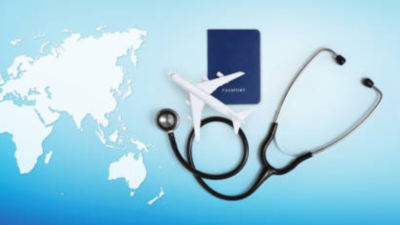Union Finance Minister Nirmala Sitharaman presented the annual budget on Saturday. Of the several significant announcements made this year, one of the promising announcements has been medical tourism.
The government is aiming to facilitate medical tourism and promote it in India in partnership with the private sector.
“Medical Tourism in India, is estimated to be around $ 9 billion which makes it stand at no.10 in the Global Medical Tourism Index. Approximately 2 million patients visit India each year from 78 countries for medical, wellness & IVF treatments,” Nirmala Sitharaman had revealed in 2022 while addressing the convocation at The Tamil Nadu Dr. M.G.R. Medical University.
What is medical tourism? How will it impact the healthcare sector?
Medical tourism has gained much popularity across several countries around the world due to traveling to another country for medical treatment. Promoting medical tourism does not only contribute to the economy but also increases the healthcare sector of a country significantly. Let’s see.
The biggest advantage is the economic benefits it brings through foreign exchange due to international patients, which adds more revenue for hospitals, medical institutions, and the government. This increased funding can be put back into further improving healthcare infrastructures, conducting research, and training programs for better medical services.
Medical tourism can enhance and modernize healthcare facilities. International patients create employment at hospitals, in hospitality, and transport groups, which helps directly in the economy.
To attract medical tourists, a country must invest in cutting-edge medical technology and state-of-the-art infrastructure. This demand leads to the introduction of robotic surgeries, AI-powered diagnostics, and telemedicine solutions; expansion and modernization of hospitals, specialized treatment centers, and research labs; adoption of international healthcare standards, ensuring quality treatment for both local and foreign patients.
Medical tourism encourages collaboration between public and private healthcare providers, leading to increased investments in public hospitals to meet international standards; better resource allocation for healthcare infrastructure; improved government policies to support healthcare innovation and expansion; and countries that integrate private-sector efficiency with government support create a stronger, more sustainable healthcare system.
The rise in medical tourism creates job opportunities in multiple sectors, including doctors, nurses, technicians, therapists, hotel staff, translators, travel agents, ambulance services, medical transport. This will also lead to increased funding from medical tourism supports training programs, scholarships, and skill development initiatives for medical professionals.
“The government’s focus on medical tourism and ‘heal in India’ initiative, with relaxed visa norms and private sector collaboration, will strengthen India’s position as a global healthcare destination. To capitalize on this, investment in infrastructure, quality care, and seamless patient experiences must be prioritized, ensuring India remains competitive in the international healthcare market,” said Mr. Behram Khodaiji, CEO, Ruby Hall Clinic Pune.
Medical seats, daycare centres
Union Finance Minister Nirmala Sitharaman on Saturday announced 10,000 additional seats in medical colleges as well as daycare cancer centres in all district hospitals. “10,000 additional seats to be added in medical colleges next year and 75,000 seats to be added in next five years,” she said.
“All district hospitals to have daycare cancer centres. About 200 daycare cancer centres will be established in 2025-26,” the FM said.
Further, “broadband connectivity to primary health centres will help in expanding telemedicine consultation for rural patients at village level”, she added.
In the last 10 years, medical colleges in the country have doubled to 780 in 2024-25 from just 387 in 2013-14 — a 102 per cent growth.
During the same period, the seats for MBBS also rose from 51,348 to 1,18,137 — a 130 per cent surge.





